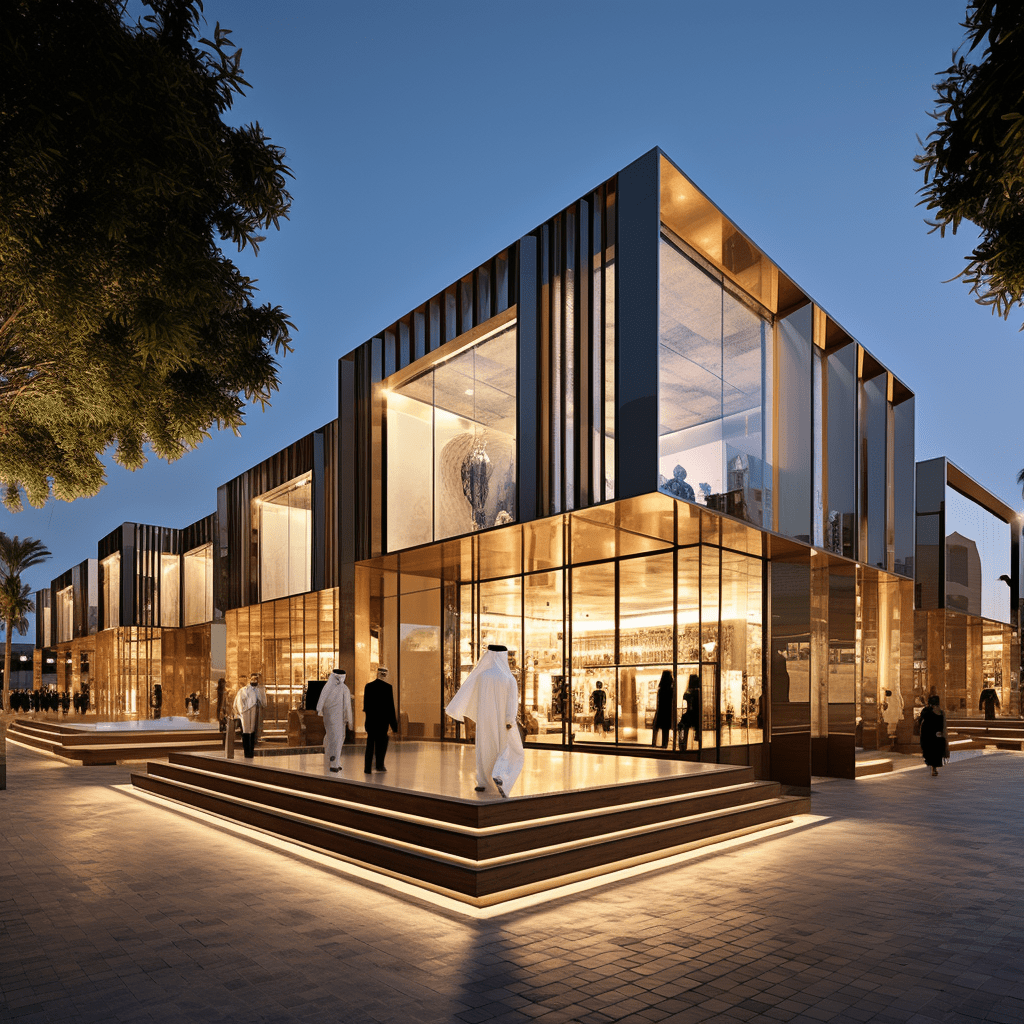Commercial and Retail Architecture Redefining the Urban Landscape in the GCC
A symphony of design innovation and urban transformation echoes across the Gulf Cooperation Council (GCC) region as commercial buildings, office towers, shopping malls, and retail spaces rise majestically. In this bustling realm of economic prosperity and burgeoning populations, the architectural prowess on display not only captures functionality and aesthetics but weaves a tapestry that breathes life into the urban fabric. From seamless adaptability to captivating visual allure, let us embark on a journey through the remarkable world of commercial and retail architecture in the GCC, where every structure becomes a testament to their lasting impact.
Functionality, the cornerstone of any commercial or retail space, is of paramount importance in the GCC. Architects and designers have been keen on incorporating innovative solutions to meet the diverse needs of businesses and consumers. Commercial buildings in the GCC are characterized by their efficiency, flexibility, and adaptability to accommodate different business requirements. The design elements focus on optimizing space utilization, ensuring ease of navigation, and integrating state-of-the-art technologies to enhance productivity and operational efficiency.
Office towers, in particular, showcase the region’s commitment to creating modern and dynamic work environments. These towers often feature open floor plans, ample natural light, and stunning views, creating a conducive atmosphere for productivity and employee well-being. The integration of smart technologies allows for seamless communication, efficient energy management, and improved connectivity. Additionally, the incorporation of sustainable design principles and green spaces within these structures promotes environmental consciousness and supports a healthy work-life balance.
Shopping malls, a cornerstone of retail culture in the GCC, have become architectural marvels that blend functionality and aesthetics. These malls are designed to offer a comprehensive shopping experience, with careful attention given to circulation, wayfinding, and ease of access. The expansive interiors are adorned with captivating architectural elements, such as grand atriums, skylights, and innovative lighting schemes that create a visually appealing ambiance. Retail spaces within these malls are meticulously designed to attract shoppers, featuring high-end finishes, captivating storefronts, and immersive environments that encourage engagement and exploration.
The aesthetics of commercial and retail architecture in the GCC reflect the region’s blend of cultural heritage and contemporary design. Traditional Arab architectural elements, such as mashrabiya screens, arches, and geometric patterns, often find their way into the facades and interiors of these structures, adding a sense of identity and cultural richness. At the same time, modern architectural styles and materials, such as glass facades, steel structures, and sleek finishes, contribute to the region’s cosmopolitan and progressive image. The juxtaposition of traditional and contemporary elements creates a unique architectural language that is distinctly Gulf in character.
Furthermore, the impact of commercial and retail architecture on the urban fabric cannot be overstated. These structures have become iconic landmarks, shaping the skyline of cities in the GCC. They contribute to the urban fabric by creating vibrant, mixed-use environments that blend commercial, recreational, and residential spaces. The incorporation of public plazas, landscaped areas, and outdoor seating encourages social interaction and community engagement. As a result, these developments foster a sense of place and contribute to the overall livability and attractiveness of the cities.
Commercial and retail architecture in the GCC showcases a harmonious blend of functionality, aesthetics, and impact on the urban fabric. The emphasis on functionality ensures that these structures meet the diverse needs of businesses and consumers, while the incorporation of innovative design elements enhances productivity and operational efficiency. The aesthetics of these buildings reflect the region’s cultural heritage and contemporary aspirations, creating a unique architectural identity. Finally, their impact on the urban fabric enhances the livability of cities in the GCC, fostering vibrant and dynamic environments that attract people from all walks of life. The future of commercial and retail architecture in the GCC looks promising, as the region continues to push boundaries and redefine the standards of architectural excellence.

